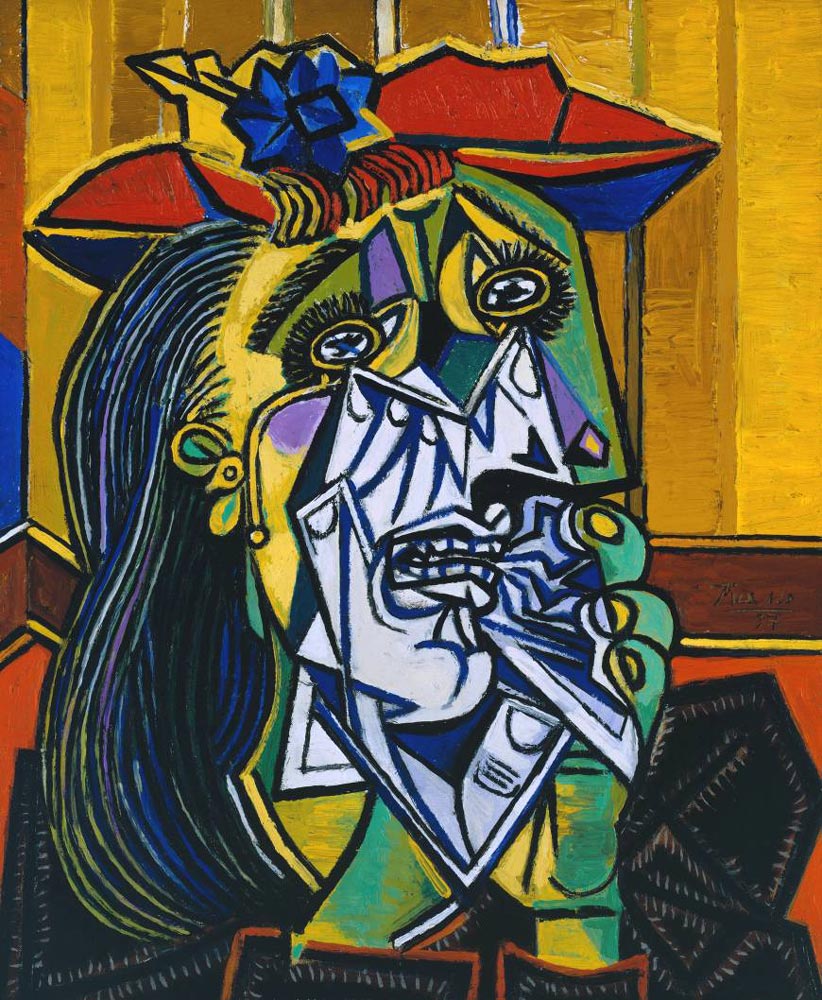| The Weeping Woman | |
|---|---|
 |
|
| Artist | Pablo Picasso |
| Year | 1937 |
| Medium | Oil on canvas |
| Location | Tate Gallery in Liverpool |
| Dimensions | 23 ⅝ х 19 ¼ inches |
| 60 х 49 cm | |
The Weeping Woman by Pablo Picasso is a silent protest of the bombing of Guernica. The painting, completed in 1937, is a colorful display of the pain felt in a time of horror. The strategically placed tears, the blue chattering teeth and piercing black eyes display an emotional woman. The woman’s face has jagged lines and a jaw that seems to remove itself. The viewer is presented with a combination of bright colors and dark hues that represent both the shock and the death that surrounds this woman.
Style and Technique
The use of distorted images and an Expressionism vibe surround this painting. Picasso’s model, Dora Maar, was the inspiration after she suffered a tremendous loss during the war. The oil on canvas painting displays her loss through angles, lines and color. Picasso painted Dora’s hair with a mix of blue and black. He also used the shallow space to give depth while acidic green and shades of mauve create the appearance of loss.
Pablo Picasso’s The Weeping Woman is the final portrayal in a series of painful images. The rearranged shapes, array of colors and stark design of this painting invoke the viewer in a variety of ways.